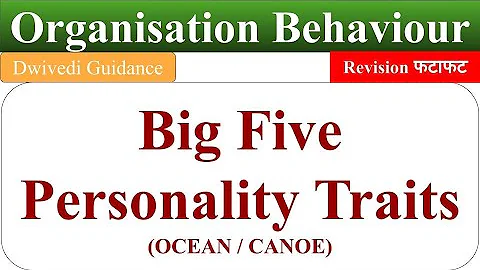1. Core self-evaluation
Core self-evaluation is a high-order personality concept, consisting of four low-order traits: self-esteem, general self-efficacy , emotional stability and locus of control. is an individual's most basic evaluation of his own abilities and values. It is a potentially broad personality structure that can subconsciously affect an individual's evaluation of himself, the external world, and others.
For a trait to become a component of core self-evaluation, three conditions must be met:
1. The trait must be evaluative, not descriptive.
2. This trait must be root-level, not superficial.
3. The trait must be broad, not narrow.
In other words, even if people are not aware of the existence of this influence during the behavior process, they can still bring it out in the form of self-report through introspection afterwards. Evaluations in specific areas of , such as evaluations of work and colleagues, will be affected by core self-evaluation.
core self-evaluation was proposed in order to find personality variables that can effectively predict job satisfaction. research shows that the correlation between core self-evaluation and job satisfaction is 0.41. Why does this correlation occur? Individually perceived job characteristics may explain this. The study found that subjects with high core self-evaluation scores will choose more complex tasks, and task complexity has a partial mediating effect between core self-evaluation and job satisfaction. This shows that individuals with high core self-evaluation scores will accept challenging work and believe that their work is valuable, so they are more likely to experience a sense of accomplishment and satisfaction.
2. Competency
1. [Concept]
Competency This concept was first proposed by Harvard University psychologist McClelland in 1973. He believes that an individual's personality traits, motivations, knowledge, skills, abilities and other factors are directly related to their work and performance. During the talent selection process, these characteristics that have a direct impact on job performance should be observed and measured.
The concept of competency given by Mr. and Mrs. Spencer in 1994 believes that competence with the following three important characteristics can be called competency in the management sense: 1. It is closely related to work performance and can even predict the future work performance of employees. 2. It is related to the work situation and is dynamic. 3. Be able to distinguish between outstanding performers and ordinary performers.
The competency model refers to the comprehensive competencies required to do a specific task well. mainly includes three elements, namely, the name of the competency, the meaning of the competency (defining the key characteristics of the competency) and the level of behavioral indicators (reflecting the differences in behavioral performance of the competency). The competency model reflects all important behaviors, knowledge and skills that affect individual success in a given job. Therefore it is used as a tool in the workplace.
2. [Competency Theoretical Model] The theoretical basis of the
competency model is the iceberg model proposed by the Spencers and the onion model proposed by Boyatzis.

1. Iceberg model:
- Above the iceberg, they represent the surface characteristics of individuals, including knowledge and skills. These external characteristics of are directly related to the qualifications required for the job and are easy to measure. They can also be improved through training, exercise and other methods.
- What is below the iceberg represents the deep characteristics of an individual , which is a hidden and lasting part of an individual's personality. It mainly includes the individual's self-concept, role cognition, motivation and values, etc. It is difficult to measure directly, but these deep characteristics are What truly separates excellent performance from average performance.
2, onion model:
summarizes competency into a layered structure from the inside to the outside. The core content of is motivation, and then from the inside to the outside, it is traits/motivations, self-image and attitude, knowledge and skills. The more outer layer is, the easier it is to cultivate and evaluate. The more internal it is, the more difficult it is to evaluate and learn.The onion model emphasizes the role of competency as a core quality. Through the evaluation of competency, a person's long-term performance can be predicted.
3. [Competency Model Modeling Method]
1, Behavioral Event Interview Method : Refers to an open behavioral retrospective exploration technique , requiring interviewees to list key events that occurred at work. It includes three items each for the most successful time and the most unsuccessful event, and asks the interviewee to describe in detail the cause, process, results, relevant people, scope of involvement, level of influence and his or her thoughts at the time of the entire event.
2. Strategic orientation method: Aims to determine competencies that are consistent with the organization's core concepts and values. This idea of can reveal the deep competencies in the iceberg model. It is based on the analysis of the responsibilities and tasks necessary for a certain occupation or profession. It mainly establishes performance standards and then uses career analysis methods to generate a broad range of competencies. Checklist. The premise for adopting this method is that the organization must have tested core values and have formed a relatively stable and distinct organizational culture.
3. Benchmarking research method: refers to collecting and analyzing the competency models of other peers or companies at the same stage of development. uses group discussions or seminars to select qualities suitable for the company and form a competency model.





















